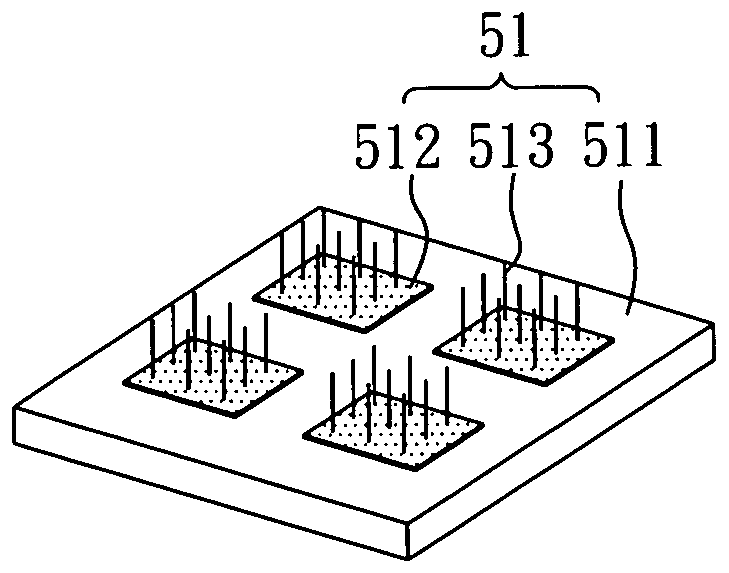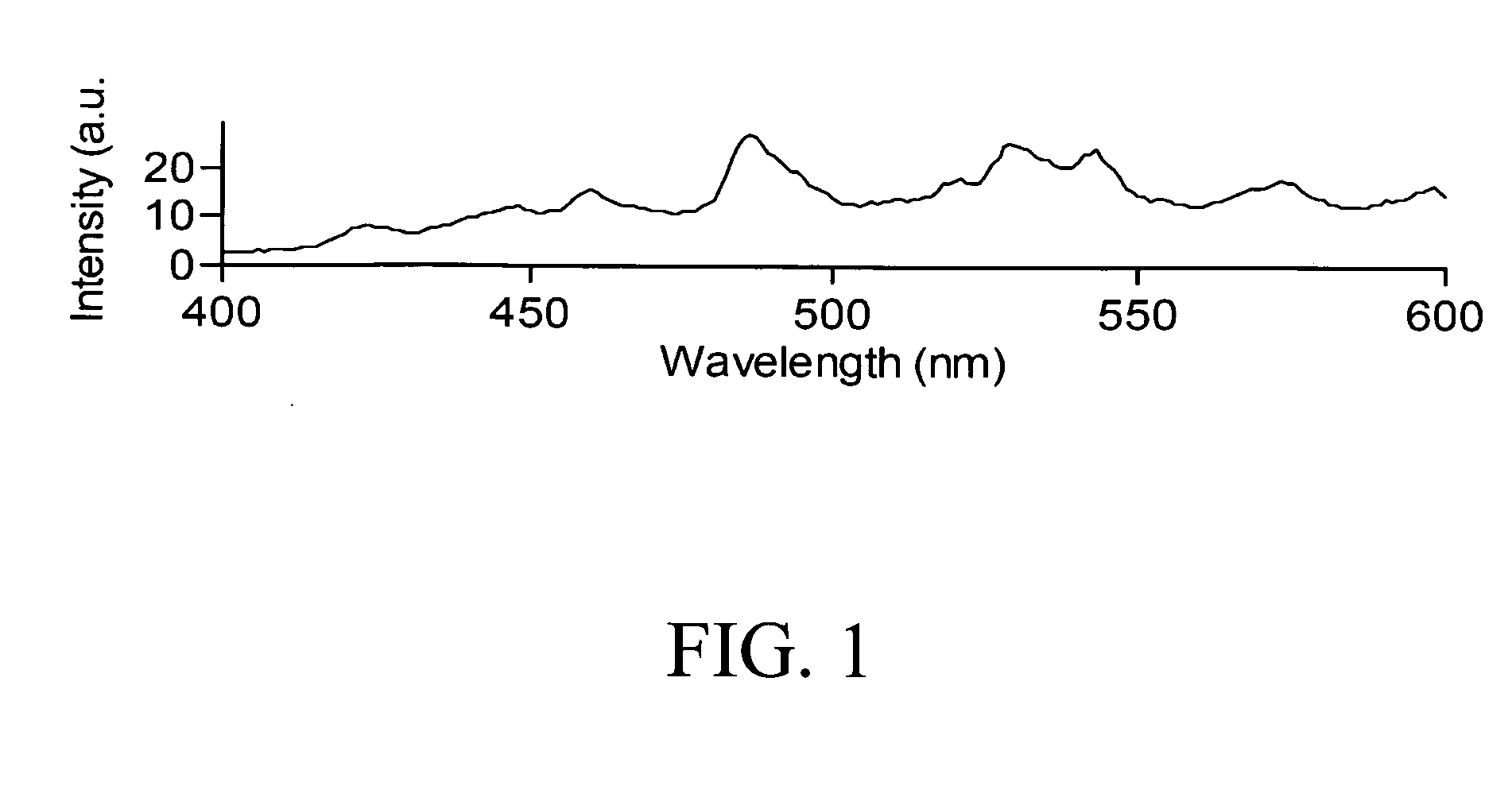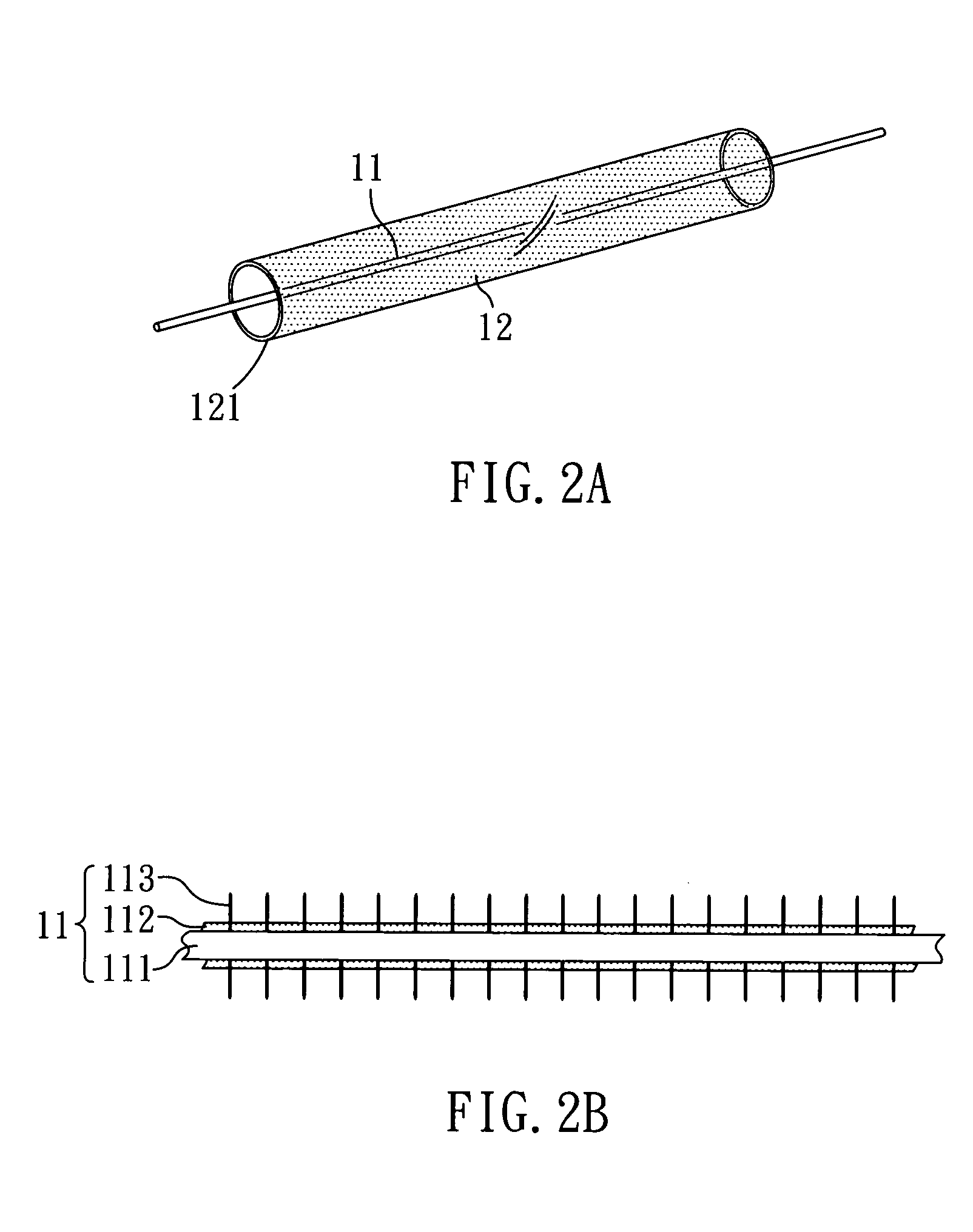Field emission device and method for fabricating cathode emitter and zinc oxide anode
- Summary
- Abstract
- Description
- Claims
- Application Information
AI Technical Summary
Benefits of technology
Problems solved by technology
Method used
Image
Examples
example 6
Preparation of Cathode Emitters of Zinc Oxide / Carbon Nanomaterial Composite on an ITO Glass Substrate
[0059]An ITO glass substrate is surface-degreased, and then immersed in the zinc electroless plating solution (as shown in Table 4) to form a patterned zinc-plating layer deposited thereon by electroless plating. The substrate is immersed in the chemical conversion coating bath (as shown in Table 1) to oxidize the zinc-plating layer into a zinc oxide film at 30° C. Subsequently, the substrate coated with the zinc oxide film is dipped in a single-walled carbon nanotube aqueous solution, and then it is baked at 200° C. for 5 minutes. The technique of the present example can successfully provide a cathode emitter of zinc oxide / carbon nanomaterial composite having good brightness and uniformity of luminance when a commercial product is used as the anode plate in the field emission device.
[0060]In the present example, the composition of the single-walled carbon nanotube aqueous solution i...
example 7
Preparation of Cathode Emitters of Zinc Oxide / Carbon Nanomaterial Composite on a Metal Plate
[0061]A substrate (an iron plate) is surface-degreased, and then immersed in the zinc electroplating solution (It is obtained from JASCO® Japan, and its commercial name is 9000 Series) to form a patterned zinc-plating layer deposited thereon by electroplating. The substrate is immersed in the chemical conversion coating bath (as shown in Table 1) to oxidize the zinc-plating layer into a zinc oxide film at 40° C. Subsequently, the substrate coated with the zinc oxide film is dipped in a nanodiamond aqueous solution, and then it is baked at 150° C. for 5 minutes. The present example shows that the technique of the present example can successfully provide a cathode emitter of zinc oxide / carbon nanomaterial composite having good brightness and uniformity of luminance.
[0062]In the present example, the composition of the nanodiamond aqueous solution is listed as the following Table 7.
TABLE 7The com...
example 8
Preparation of an Anodic Conductive Phosphor Material of Zinc Oxide, Having High Transmittance, on a Glass Substrate
[0063]A glass substrate is surface-degreased and roughened, and then immersed in the zinc electroless plating solution (as shown in Table 4) to form a zinc-plating layer deposited thereon by electroless plating. The substrate is annealed in a muffle furnace at 250° C. under the atmosphere of oxygen at 5 or 100 sccm. Using a photoluminescence spectrometer, it is analyzed that the phosphor material of zinc oxide in the present example can emit blue green luminescence at the wavelength of 470˜510 nm as shown in FIG. 1.
PUM
| Property | Measurement | Unit |
|---|---|---|
| Temperature | aaaaa | aaaaa |
| Temperature | aaaaa | aaaaa |
| Temperature | aaaaa | aaaaa |
Abstract
Description
Claims
Application Information
 Login to View More
Login to View More - R&D
- Intellectual Property
- Life Sciences
- Materials
- Tech Scout
- Unparalleled Data Quality
- Higher Quality Content
- 60% Fewer Hallucinations
Browse by: Latest US Patents, China's latest patents, Technical Efficacy Thesaurus, Application Domain, Technology Topic, Popular Technical Reports.
© 2025 PatSnap. All rights reserved.Legal|Privacy policy|Modern Slavery Act Transparency Statement|Sitemap|About US| Contact US: help@patsnap.com



